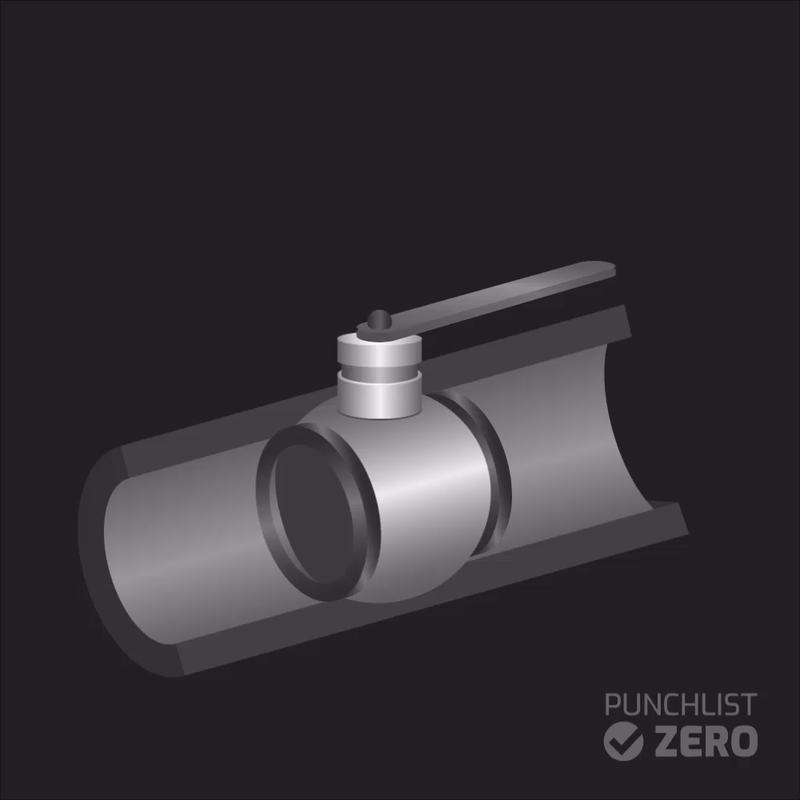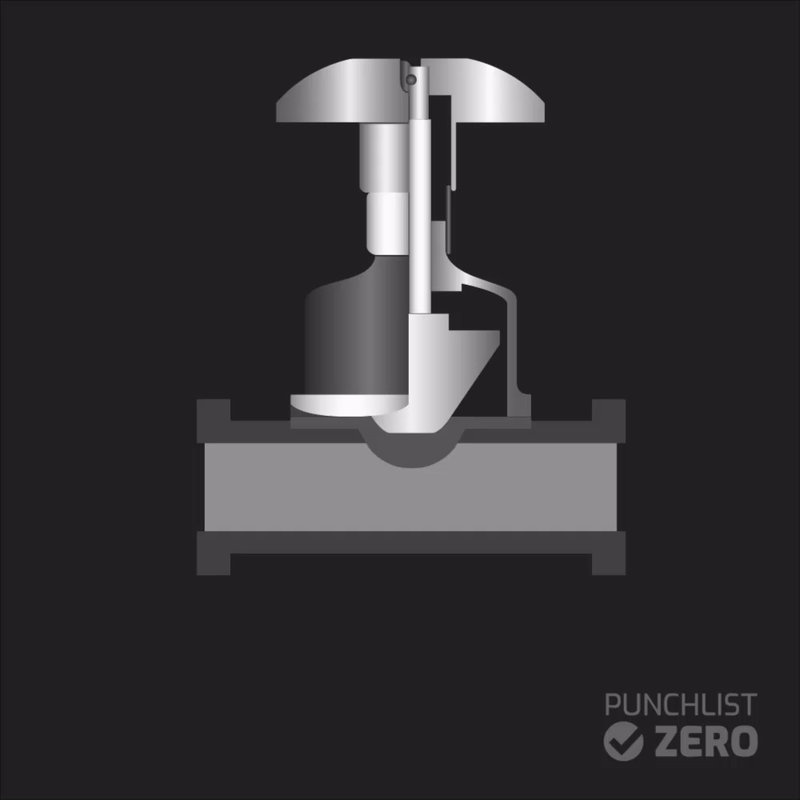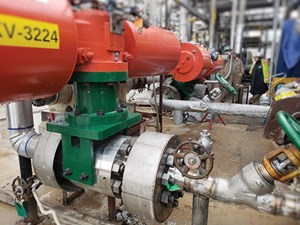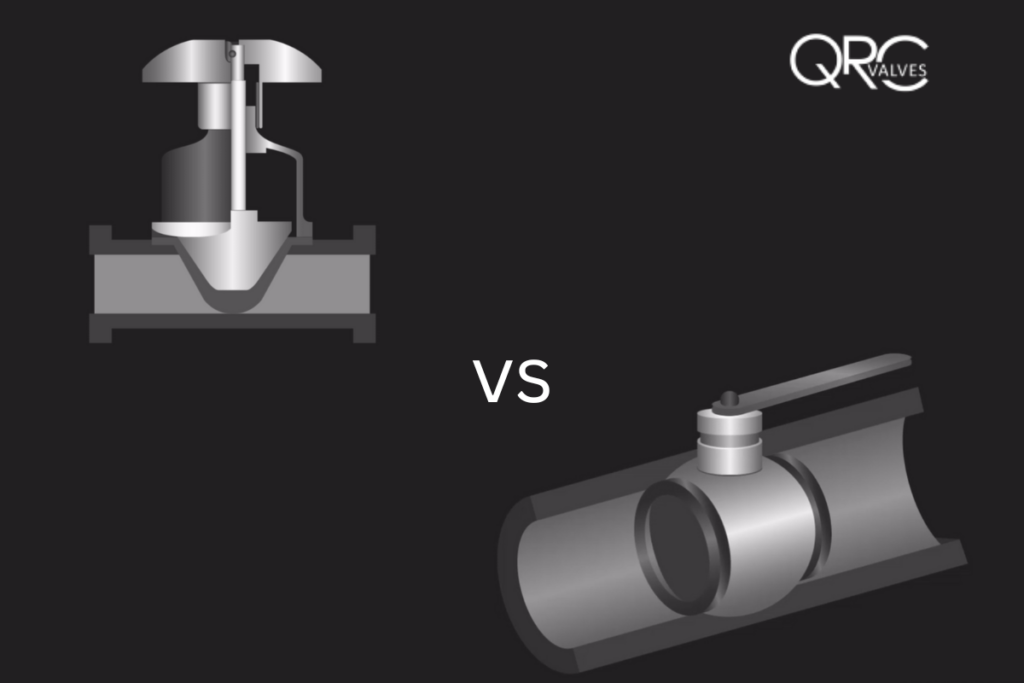In some industrial applications, diaphragm valves compete with ball valves. Each present a distinct set of advantages and disadvantages. In this article, you will learn about the function of the diaphragm valve versus the ball valve, its applications, and the advantages and disadvantages of both types.
Function
The main difference between a diaphragm and a ball valve deals with the way that each valve controls flow.

Ball valves provide a spherical shell of metal that rotates in and out of the flow path. Ball valves are ideal for on-off control. Quarter-turn actuation starts or stops flow by positioning a metallic ball in a straight-through flow path. A hollow, perforated, pivoting ball controls the flow through it. The ball rotates around an axis perpendicular to the flow.

Diaphragm valves provide a flexible elastomeric diaphragm consisting of a valve body and a seat onto which the diaphragm shuts. The diaphragm valve provides rapid shutoff and precise actuation. It presses a flexible sheet that narrows the flow path for fluid. Diaphragm valves provide the highest cycle life among all the valve types.
Applications of Diaphragm Valve vs. Ball Valve
Before choosing a valve, the chemical composition of the system media, flow rate, temperature, and pressure must be considered. Any actuation requirements and desired shut-off response rate should also be known.

Ball valves provide easy operation and long service life. Their production cost is low, and they can withstand high pressure, velocity, and temperature flows. The force required for valve actuation is lower than gate valves and globe valves. These characteristics make ball valves a typical process control choice in standard industrial applications.
One disadvantage is that ball valves cannot be easily cleaned. This reduces their use in medical and food and beverage applications. They are also not a good choice for sustained throttling applications.

On the other hand, diaphragm valves find common use in corrosive and abrasive fluid applications. Their design for higher operating pressures lends to their use in industrial facilities and process applications.
For instance, power plants and chemical industries usually use diaphragm valves. Also, diaphragm valves are employed in wastewater, industrial, and municipal applications. Paper manufacturing, pulp, and other industries that deal with slurry generation and control, such as cement mining and alcohol production, also use diaphragm valves frequently.
Advantages and Disadvantages of Ball and Diaphragm Valves
Ball Valve Advantages:
-
- Provides good sealing performance and a low degree of leakage.
-
- Maintains and regulates demanding process media. Can withstand high pressures.
-
- Rugged construction and long service life. Easy to repair and maintenance to extend the life span.
-
- Low purchase and maintenance costs offer a cost-effective solution.
-
- Depending on body configuration, it may allow for a seat and seal inspection without physical removal of the valve.
-
- Does not require routine lubrication.
Ball Valve Disadvantages:
-
- Throttling features are poor. The partially exposed seat in a throttling position may degrade due to high-velocity flows. As a result, long-term usage is not advisable.
-
- Wear and tear are inevitable. When regulating the wrong type of fluids, such as slurries, excessive particle accumulation will cause ball valves to stick in place.
Diaphragm Valve Advantages:
-
- Utilized as throttling and on-off service valves.
-
- Because of the diversity of linings available, they provide good chemical resistance.
-
- Stem leaking does not present an issue.
-
- Provides bubble-tight service.
-
- It does not trap solids, slurries, and other contaminants in pockets. It works well with slurries and thick liquids.
-
- Compatible with hazardous chemicals and radioactive fluids.
-
- Because these valves do not contaminate the flow media, they work well in food processing, pharmaceuticals, brewing, and other industries with zero tolerance for contamination.
Diaphragm Valve Disadvantages:
-
- The weir may prevent complete drainage of piping.
-
- Diaphragm valves are limited in sizes, usually NPS ¹⁄₂ to 12 (DN 15 to 300).
-
- Applies only to moderate pressures of approximately 300 psi.
-
- Applies only to moderate temperatures of around -60 to 450 F.
-
- Do not work for multi-turn operations


Recent Comments